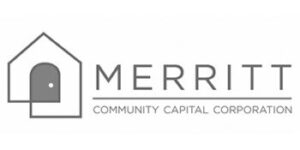 Last week, Collin Tateishi joined the California Housing Partnership as a Sustainable Housing Policy Analyst. In this new role, Collin manages CHPC’s efforts to increase access to water efficiency and conservation programs for nonprofit affordable housing owners and the low-income tenants they serve. He also supports various energy efficiency and renewable energy initiatives by assisting the Green Rental Home Energy Efficiency Network (GREEN). Collin recently received a Master of Urban and Regional Planning degree from UCLA, where he focused his studies on real estate development and finance, housing markets, and green retrofits. In this post, CHPC’s Sustainable Housing Policy Manager, Caroline McCormack, interviews Collin about his background and goals for his new role at CHPC.
Last week, Collin Tateishi joined the California Housing Partnership as a Sustainable Housing Policy Analyst. In this new role, Collin manages CHPC’s efforts to increase access to water efficiency and conservation programs for nonprofit affordable housing owners and the low-income tenants they serve. He also supports various energy efficiency and renewable energy initiatives by assisting the Green Rental Home Energy Efficiency Network (GREEN). Collin recently received a Master of Urban and Regional Planning degree from UCLA, where he focused his studies on real estate development and finance, housing markets, and green retrofits. In this post, CHPC’s Sustainable Housing Policy Manager, Caroline McCormack, interviews Collin about his background and goals for his new role at CHPC.
Caroline: Before you joined CHPC, you managed sustainability initiatives for a nonprofit owner. Can you talk more about your background and your interest in sustainability?
Collin: Five years ago, I started my job as an Assistant Project Manager & Planner with the Little Tokyo Service Center (LTSC) in Los Angeles. I worked on two LEED for Homes certified developments and became very interested in the connection between social equity, housing, and environmentalism. Luckily for me at this time, LTSC began to explore green neighborhood strategies—greywater, stormwater, community solar, organic waste, place-making, etc.—that could make Little Tokyo the nation’s first cultural eco-district and protect it from rapid gentrification and displacement.
Caroline: You just finished your master’s thesis on water conservation in multifamily housing. Can you tell us more about this project and your recommendations?
Collin: I wrote Water Retrofits: Achieving Efficient Management at Building and District Scales for LTSC. My goal was to figure out which strategies LTSC should pursue in order to reduce operating costs, improve asset value, support the financial and physical well-being of residents and small-businesses, and also bring green features to a harsh urban setting. I focused on water conservation opportunities at four properties in the Little Tokyo Historic District while exploring the viability of scaling those efforts to a shared greywater system. I benchmarked each property and conducted a cost-benefit analysis of various water saving improvements to determine payback periods.
Two of my key findings were: (1) efficient water management relies on both building and public infrastructure investments, and (2) multi-family and affordable housing face unique challenges with meter structure, data collection, rent restrictions, and access to capital. I recommended that LTSC invest in water conservation before water reuse, and identified the need that affordable housing owners have for gap-financing even after incentive and rebates are used. I also recommended key internal strategies to prepare for future energy or water retrofits.
Caroline: Few water utilities specifically target the multifamily low-income housing sector for their conservation programs. Even fewer water utilities have any experience serving our sector, or even knowledge of the barriers that exist. How do you think we can break down this knowledge gap?
Collin: CHPC can support both parties by focusing on behavior change, equitable water rates, and viable incentive/rebate programs. Knowledge and expertise are valuable on their own, but even more powerful when shared. We live in the information age – a time of incredible access and distraction – and yet there is limited information sharing about urban and rural water systems. In order to break down the knowledge gap between water utilities and the multifamily low-income housing sector, we must go back to the basics. Owners and low-income households are more than ratepayers. They are people who rely on clean, reliable, and affordable water to live healthy and prosperous lives. Affordable housing owners will be more likely to promote conservation if they better understand where their water comes from. Water providers will design more effective programs as they learn more about their end users and how to best reach them.
Knowledge and expertise are valuable on their own, but even more powerful when shared.
Caroline: The goal of CHPC’s GREEN Water Working Group this year is to grow the availability of water conservation incentives and policies beneficial to affordable multifamily rental properties and low-income households, and assess how water conservation strategies and policies support and impact affordable housing. How do you envision moving this goal forward?
Collin: I believe that CHPC is well positioned to connect the key players: owners, public agencies, and water utilities. Each has a critical role in advancing sustainable water management, but responds to different priorities and interests. At the core is the fundamental need to conserve water. I hope that the GREEN Water working group will be the foundation for collaboration between these key players to help overcome the unique challenges that affordable and multifamily owners face. We must meet the owners, public agencies, and water providers where they are, understand their positions, and guide each towards a common goal.
CHPC’s water conservation work is generously made possible through the California Drought Action Initiative program of Resources Legacy Fund. To learn more about CHPC’s water conservation advocacy efforts or to join the GREEN Water Working Group, contact Collin at ctateishi@chpc.net or (213) 785-5734.











